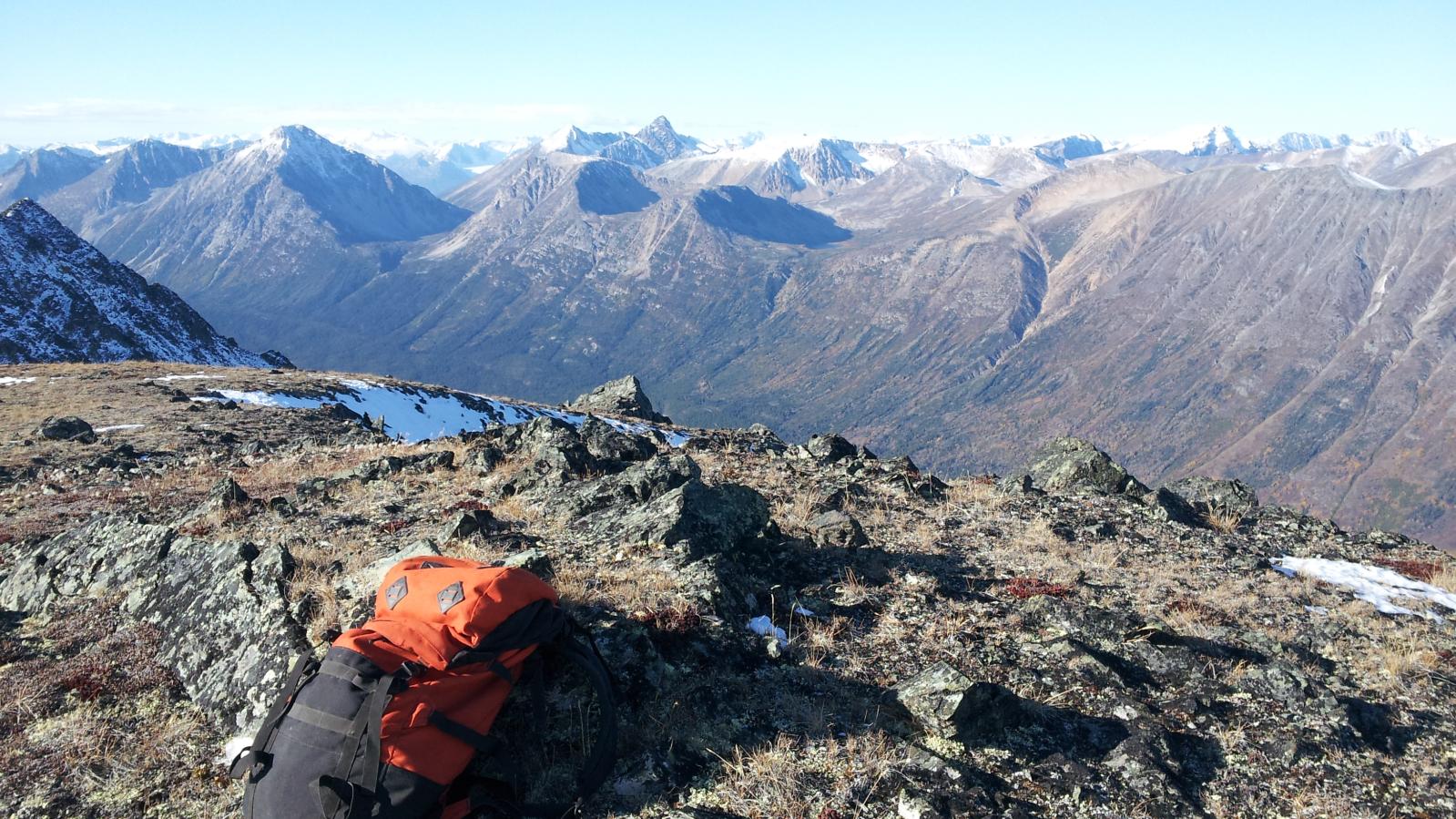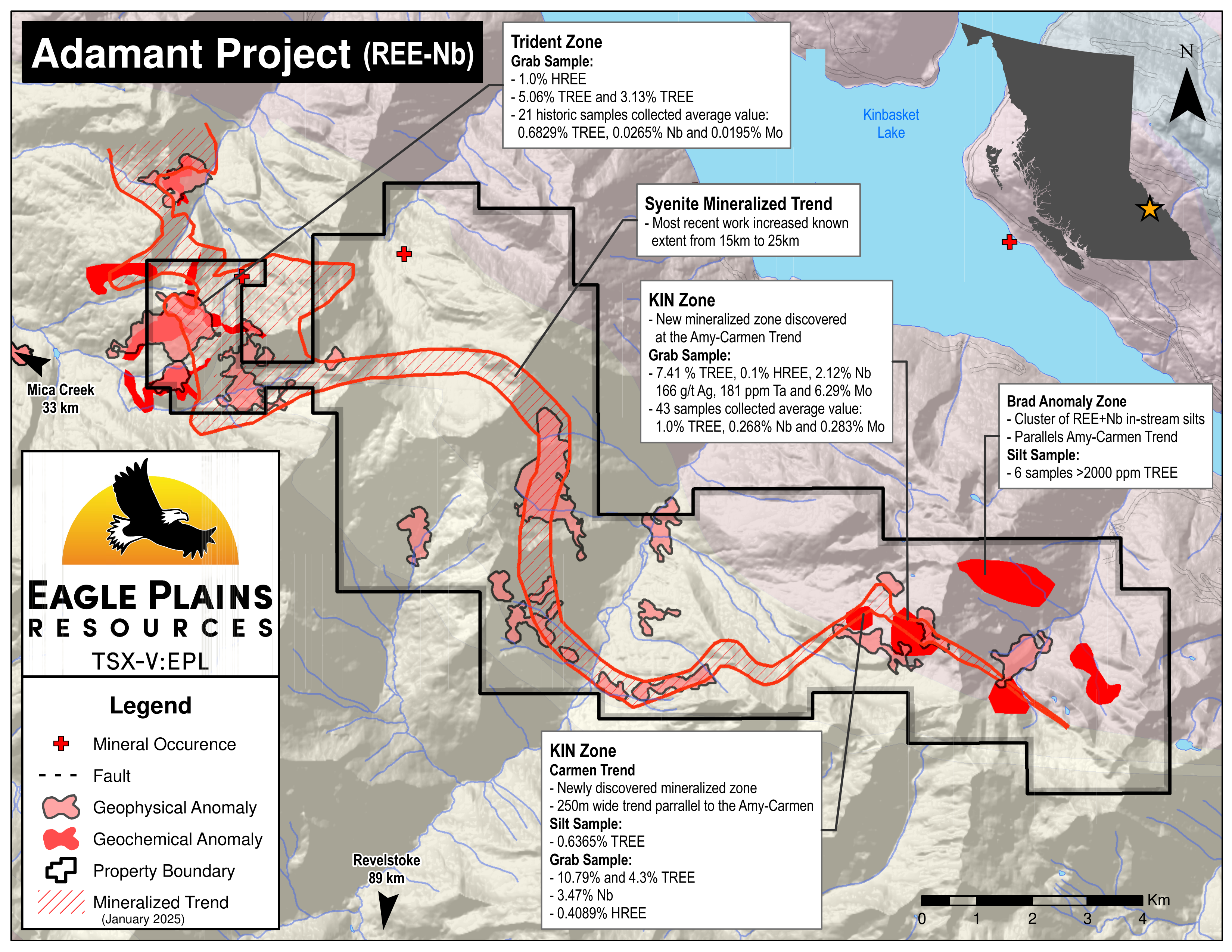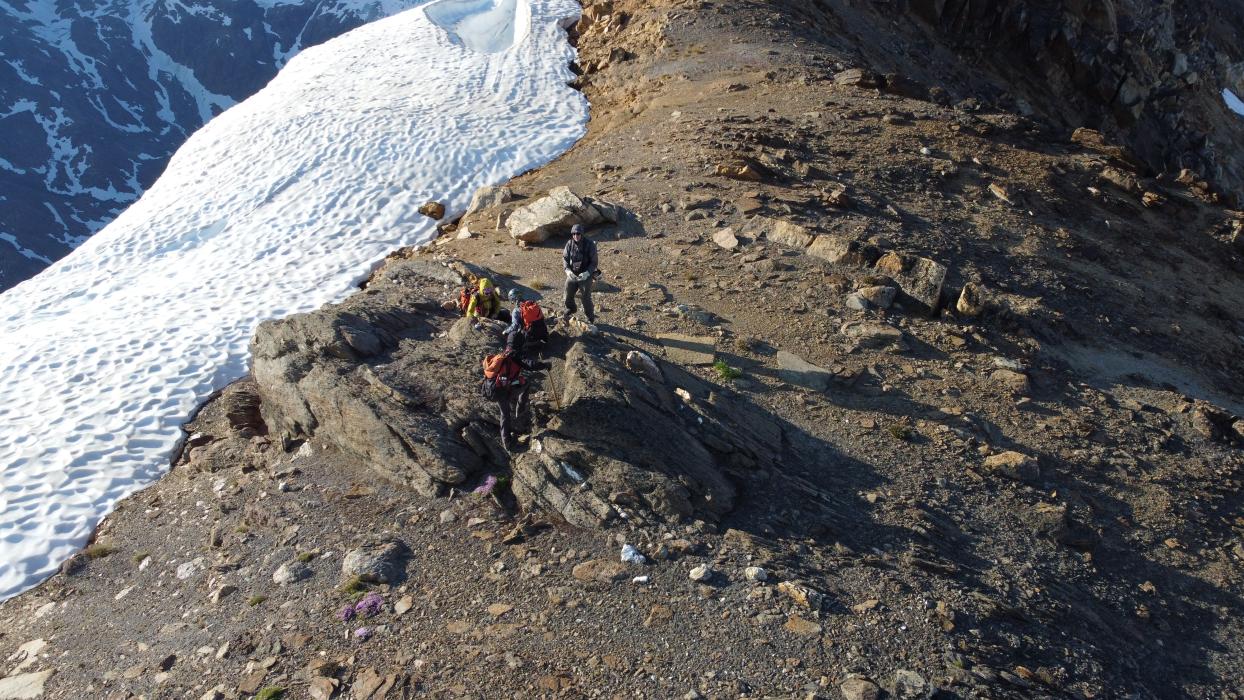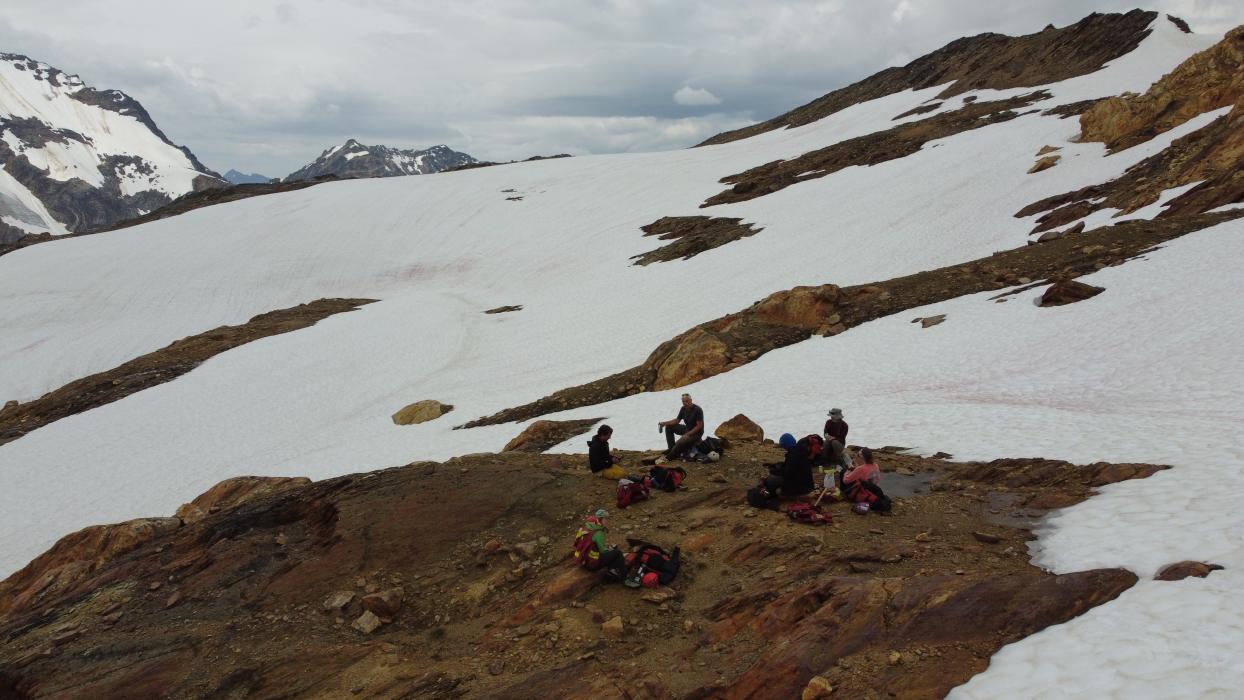
Adamant Project
The 8,424ha Adamant Property is situated 95km NE of Revelstoke, B.C. Forest Service roads provide access to the east and west sides of the property with helicopter assisting access to the remainder. Staked in 2021, the project is 100% owned by Eagle Plains with a 2% NSR held by Eagle Royalties containing a 1% buy-back clause
Previous work identified widespread distribution of Rare Earth Elements (“REE’s”).
-
- British Columbia
-
- Available for option: Yes
-
- Molybdenum,
- Niobium,
- Rare Earth Elements,
- Silver,
- Tantalum
Project Highlights
- Exceptional geology favourable for Rare-earth and high-tech metals (REE, Nb, Zr)
- Numerous untested coincident geochemical and geophysical anomalies
- Highly anomalous stream silt results of Rare-earth elements and Niobium
- Upstream prospecting was successful in locating hard rock sources of the mineralization
- Exploration has increased the mineralized trend from 12km to over 20km
Summary
The 8,424ha Adamant Property is situated 95km NE of Revelstoke, B.C. Forest Service roads provide access to the east and west sides of the property with helicopter assisting access to the remainder. Staked in 2021, the project is 100% owned by Eagle Plains with a 2% NSR held by Eagle Royalties containing a 1% buy-back clause.
Previous work identified widespread distribution of Rare Earth Elements (“REE’s”).
Project Highlights
- Exceptional geology favourable for Rare-earth and high-tech metals (REE, Nb, Ta, Zr)
- Numerous untested coincident geochemical and geophysical anomalies
- Highly anomalous stream silt results of Rare-earth elements and Niobium
- Upstream prospecting was successful in locating hard rock sources of the mineralization
- Exploration has increased the mineralized trend from 12km to over 20km
Geology
The Adamant area is underlain by high grade metamorphic sedimentary rocks of the Upper Proterozic Horsethief Creek Group which has been intruded by a series syenite sills related to the adjacent Trident Creek alkaline complex, located less than 10 kilometres to the northwest.
History
A 1987 Gov. of B.C. study focussing on the economic viability of feldspar and nepheline syenite occurrences in the area concluding that it is capable of producing feldspathic products meeting commercial specifications for use in glass/ceramic manufacturing. Industry work in 2006-7 included a structural analysis of the nepheline syenite body concluding that N-NW fractures and crosscutting N-NE faults may be considered controlling features of the nepheline syenite phase.
In 2010/11, the area was explored by Cazador Resources, programs included silt/rock sampling and prospecting followed by an airborne geophysical survey of the entire property. This was followed by stream silt-sampling of the tributaries draining the property. Prospecting and a property-scale mapping program were conducted later in 2011. These programs concluded that a strong rare-earth mineralized trend associated with the alkaline intrusion in the NW portion of the property exists along a strike of 20+km within the property.
Eagle Plains Exploration
In August 2022, an Eagle Plains exploration program focussed on defining and extending the Trident‐Kin syenite trace and evaluating additional historic targets, rock and stream silt samples were collected. Results included the highest ever REE stream-silt sample assay on the property from the Carmen trend returning 6365 ppm TREE (Total Rare Earth Elements). Rock grab sampling returned 10 samples over 5000 ppm TREE, the best result of 43331 ppm TREE (4.33% TREE) was located upstream of the stream-silt anomaly. Two of the top-10 rock sample results also returned the highest ever reported heavy rare earth element (HREE*) assays on the property of 10705 ppm HREE and 9337 ppm HREE. *HREE elements include summation of Gd, Tb, Dy, Ho, Er, Tm, Yb, Lu.
Recommendations for future work at the Adamant Property include:
- Determmine source of the strongly anomalous (1.0%) heavy rare earth element (HREE) mineralization discovered in 2022
- Refinement of the location, size and orientation of the mineralized syenite trend
- Prospecting/mapping of all under-explored targets including follow up of the very strong radiometric anomalies in the SE portion of the property
- Scrutiny of strong stream-silt anomalies associated with weak radiometric anomalies in the SE
- Ground-truthing of the strong NW-trending radiometric anomalies in the SW portion of the property
- Review of the known mineralization for metallurgical considerations
- Diamond drilling of mature targets
- Permitting of drilling, geophysical and trenching activities
Eagle Plains - A Project Generator
Eagle Plains Resources is a project generator with several mineral exploration properties of merit that meet qualifying transaction requirements. We facilitate the listing process for capital pool companies and initial public offerings while providing technical expertise for exploration programs. Companies interested in co-operatively exploring any of our projects please contact: Chuck Downie at ccd@eagleplains.com or Mike Labach at mgl@eagleplains.com or call 1 866 Hunt Ore (486 8673).
Details
The Adamant Property is situated 45km southeast of Mica Creek, B.C. and 95km northeast of Revelstoke, B.C. The east and west sides of the property are accessible by forest service roads with helicopter assisting access for the remainder. The 8,424ha property was staked in 2021 and is 100% owned by Eagle Plains with a 2% NSR held by Eagle Royalties containing a 1% buy-back clause.
The upper portions of the property are characterized by high alpine glacier clad peaks with excellent outcrop exposure which becomes more limited in the forested terrain of the lower elevation portions of the property.
Previous work has established widespread distribution of Rare Earth Elements (“REE’s”) with the highest concentrations occurring in the central portion of the property. Niobium mineralization appears more prevalent in the northwestern area of the property in the vicinity of Trident Mountain.
Project Highlights
- Exceptional geology favourable for Rare-earth and high-tech metals (REE, Nb, Ta, Zr)
- Numerous untested coincident geophysical and geochemical anomalies
- Highly anomalous stream silt results of Rare-earth elements and Niobium
- Upstream prospecting was successful in locating hard rock sources of the mineralization
- Exploration has increased the mineralized trend from 12km to over 20km
Geology
In British Columbia, carbonatites, nepheline and sodalite syenites gneisses and related alkaline rocks are found in a broad zone which is parallel to, and on either side of the Rocky Mountain Trench. The Trident Mountain syenites belong to a subzone called the Omineca Belt of alkaline rocks which are hosted by metamorphosed Precambrian to Early Cambrian strata.
The area is underlain by high grade metamorphic sedimentary rocks of the Upper Proterozic Horsethief Creek Group which has been intruded by a series syenite sills related to the adjacent Trident Creek alkaline complex, located less than 10 kilometres to the northwest.
Host rocks in the property area consist of intercalated garnet+-kyanite bearing semipelite to psammopelite geniss, and quartzite of the Upper Proterozoic Horsethief Creek Group. Two types of prevalent but subordinate intrusive rocks were recognized as being non-foliated quartz-feldspar-tourmaline ‘alaskite’ granite or pegmatite sills and lesser dykes, and well banded, white to beige garnet-ilmenite bearing syenite sills and boulders.
The syenite gneisses at Trident Mountain are white to grey weathering, medium grained and moderately to well foliated. They are composed of white to pinkish microcline (25-50%), albitic plagioclase (10-30%) and nepheline (10-40%). Nepheline generally has an irregular poikiloblastic texture and is often partially altered to clay minerals. Green to olive-pleochroitic biotite is commonly the mafic phase present and comprises from trace amounts to more than 30% of the rock. The varying biotite content is responsible for the distinction between leuco-, meso-, and melanocratic syenite gneisses. Accessory minerals in syenite from the Trident Mountain area include sodalite, cancrinite, calcite, apatite, sphene, ilmenite, pyrochlore and zircon.
The syenites intruded psammitic and kyanite-bearing pelitic schists of the Hadrynian (1000-544 Ma) Horsethief Creek Group at 378 Ma. In general, the syenitic gneisses at Trident Mountain can in the field readily be distinguished from metasediments of the Horse Thief Creek Group by their white to grey colour and distinct mineral assemblages. In the western part of the property the syenitic gneisses show a consistent bedding and can easily be traced, whereas towards the east they are cut and displaced by faults.
History
Early work included a 1987 study by the Gov. of B.C. focussing on the economic viability of feldspar and nepheline syenite occurrences in the Trident Mountain area. The study concluded that this area is capable of producing feldspathic products which meet commercial specifications for use in glass/ceramic manufacturing.
Subsequent work by industry in 2006-7 included a structural analysis to assess the limitations or structural controls of the nepheline syenite body concluding that north-northwest fractures and crosscutting north and north-northeast faults and fracture zones may be considered controlling features of the nepheline syenite phase.
In 2010, both the Trident Mountain and Kin zones were explored by Cazador Resources with programs including silt sampling, rock sampling and prospecting. Results from the Trident Mountain Zone include:
- Verifying the presence of widespread syenite intrusions over a 10 km long by up to 1 km wide zone
- 8 rock/boulder samples returned greater than 0.10% Nb2O5 (niobium oxide)
- An outcrop grab sample returned 2.82% Nb2O5 and 500 g/t Ta2O5 (tantalum oxide)
- 4 boulder samples also returned greater than 0.30% TREO (Total Rare Earths Oxides) with one mafic intrusive boulder sample returning 2.81% TREO
Results from the Kin Zone include:
- 4 syenite boulder samples collected over a 700m x 700m area returning up to 5.26% TREO (total rare earths oxides) and 2.7% Nb2O5
- Silt samples returned very anomalous REE and Nb results overall with the highest value of 2,622 ppm TREE (total rare earths elements) coming from the main Kin drainage
In 2011, Cazador undertook a helicopter borne magnetic, gradiometer, and radiometric geophysical survey of the entire property group followed by stream silt-sampling of as many of the tributaries draining the property as possible. Results from these and previous exploration programs guided a significant prospecting and property-scale mapping program later in 2011. This work explored 20 target areas, 9 in the Trident and 11 in the Kin zones.
Conclusions as a result of these programs are listed below by zone.
Adamant Project Zones
Within the Adamant property, two distinct anomalous mineralized zones are present:
Trident Zone
Generally, the geology of the Trident Mountain area is characterized with syenites being exposed on cliffs at elevations of 2,200 to 3,000 meters. Previous exploration programs at this zone have concluded:
- The most encouraging mineralized syenite bodies encountered was that of a 5-15m thick pegmatitic syenite sill containing significant accessory tourmaline and allanite, with lesser monazite and zircon
- The known extent of the Trident Mountain syenite has been greatly increased from 15km to more than 25km, encroaching into the western 2/3rd’s of the Kin Zone; and subsequently the associated economic potential of Rare Earth Element (REE), niobium (Nb), and molybdenum commodities.
- Two target areas in the Trident property, spanning 1.5km of the syenite trace, returned encouraging rock sample results. The best results being 5.06% TREE, 0.17% Nb and 0.2% Mo. Average values for all the samples are 0.68% TREE, 0.035% Nb, and 0.0195% Mo.
- The mineralization at the Trident Zone, Void Target area is very similar to that associated with mineralized pegmatitic quartz syenite sills located at the Amy-Carmen target area of the Kin Zone
Kin Zone
The Kin Zone is characterized by mineralized syenite bodies at the new Amy-Carmen Showing area occurring as pinch-and-swell sills hosted in isoclinally folded amphibolite-grade metasediments of the Horsetheif Creek Group. Conclusions from the exploration programs to 2011 are:
- four target areas spanning a continuous 3.5km trace of the main syenite, returned very encouraging rock sample results spanning 1km. These include up to 7.4% TREE, 2.1% Nb, and 6.29% Mo, with respective averages of 1.0% TREE, 0.268% Nb, and 0.28% Mo. 45% of the 43 samples returned greater than 0.5% TREE with the top 10 samples all returning better than 1.0% TREE
- In the region of the Amy-Carmen channel samples, tight folding of the strata has resulted in fold repetition of the syenite sills and generated a repeated stack of mineralized syenite that is approximately 250 m wide and open along strike of the Kin geophysical trend.
- A second parallel trend of mineralized syenite, quartz veins and associated alteration occurs 500 m south of the Amy-Carmen trend. This parallel trend, dubbed the “Carmen” trend comprises a ~250m wide zone of an elevated radiometric response with many narrow mineralized structures. Nine samples collected over a 1 km strike returned up to 10.79% TREE and 3.47% Nb and HREE to 0.4% indicating a distinct geochemical and mineralogical trend
Eagle Plains Exploration
In August 2022, Eagle Plains conducted an exploration program at the Adamant Property with a focus on defining and extending the Trident‐Kin syenite trace and evaluating additional targets generated by historic work. The field program included collecting rock samples and stream silt samples. The results included the highest ever REE stream-silt sample assay on the property from the Carmen trend returning 6,365 ppm TREE (Total Rare Earth Elements). Rock grab sampling returned 10 samples over 5,000 ppm TREE, the best result of 43,331 ppm TREE (4.33% TREE) was located upstream of the above mentioned stream-silt anomaly. Two of the top-10 rock sample results also returned the highest ever reported heavy rare earth element (HREE*) assays on the property of 10,705 ppm HREE and 9,337 ppm HREE. *HREE elements include summation of Gd, Tb, Dy, Ho, Er, Tm, Yb, Lu.
Future Work
Recommendations for future work at the Adamant Property are as follows:
- Continued refinement of the location, size and orientation of the Trident-Kin syenite trace is recommended, particularly at the north and south known extents, and regions of uncertainty between the Amy-Carmen showing area and the syenite projection to Windy Creek
- Property- to showing-scale prospecting and or mapping should continue at all unevaluated or under explored targets identified in previous programs. Of particular interest are the very strong radiometric anomalies underlying the Kin south and Kin west targets
- Strong stream-silt anomalies at the Kin Zone associated with weak radiometric anomalies also deserve close scrutiny to rule out the possible existence of deposits that may not have a strong radiometric signature
- One additional target not previously identified should include ground-truthing of the strong NW-trending radiometric anomalies on the south side of Bigmouth Creek near the SW limit of the Trident Zone area
- Prior to significant additional expenditures on the property, it would be prudent to have the known mineralization and mineralogical report reviewed by a REE expert for metallurgical considerations
- Sufficient mineralization potential has been demonstrated, and geological surface information has been collected, to warrant diamond drilling operations at the Void and Amy-Carmen target areas
- Initial diamond drilling targets have been defined, and a permit application covering drilling, geophysical, and trenching activities with supporting camp infrastructure has been submitted to the Ministry of Energy, Mines and Low Carbon Innovation
Eagle Plains - A Project Generator
Eagle Plains Resources is a project generator with several mineral exploration properties of merit that meet qualifying transaction requirements. We facilitate the listing process for capital pool companies and initial public offerings while providing technical expertise for exploration programs. Companies interested in co-operatively exploring any of our projects please contact: Chuck Downie at ccd@eagleplains.com or Mike Labach at mgl@eagleplains.com or call 1 866 Hunt Ore (486 8673).
Updated January 10, 2025









